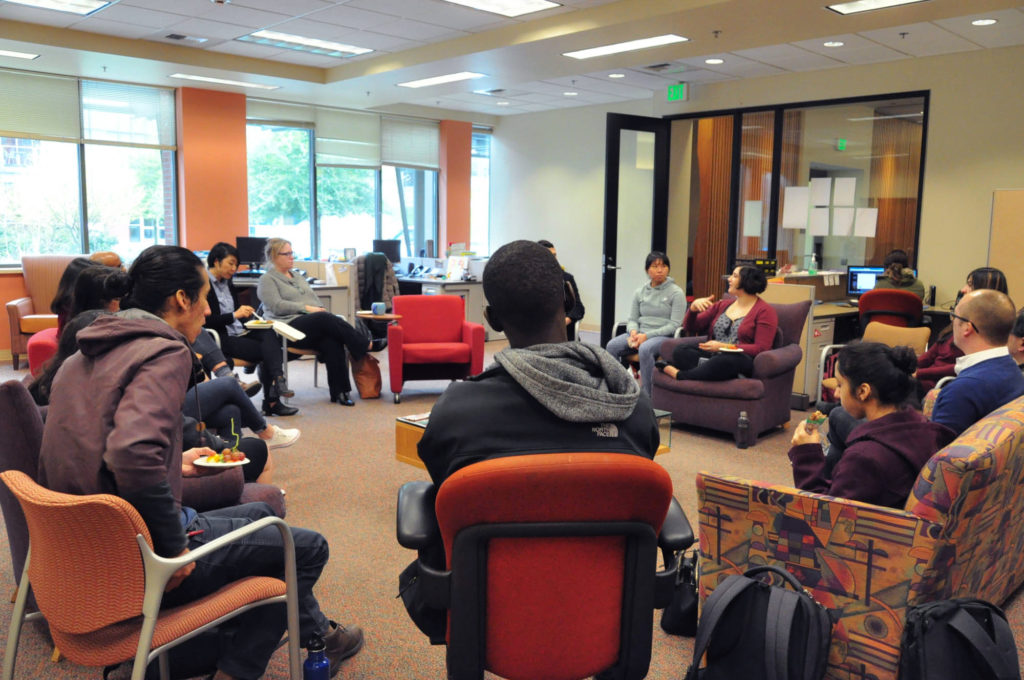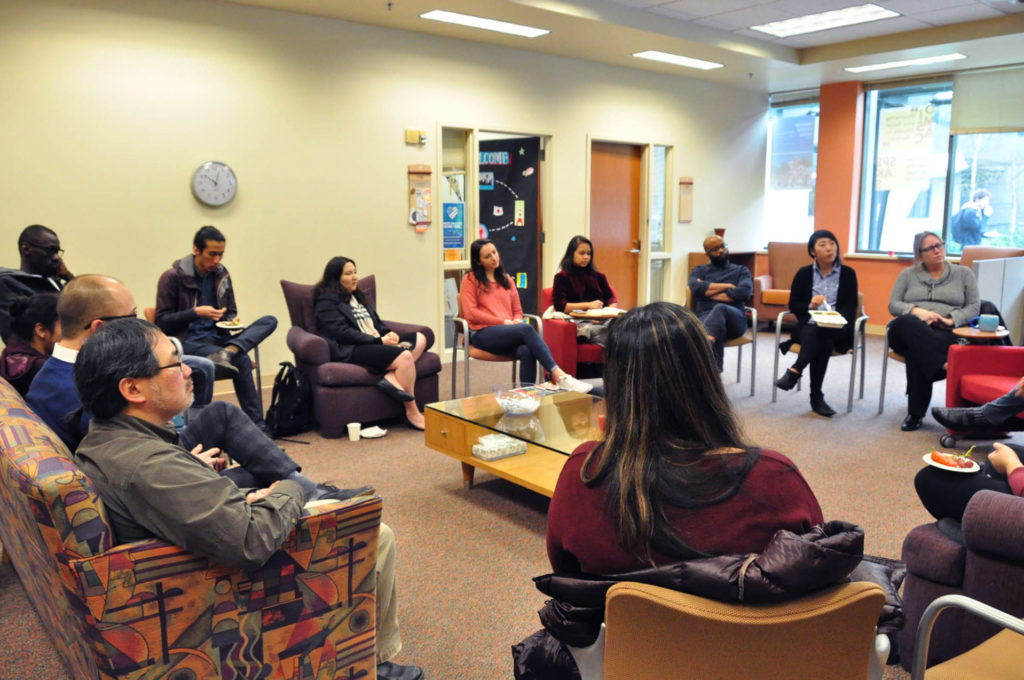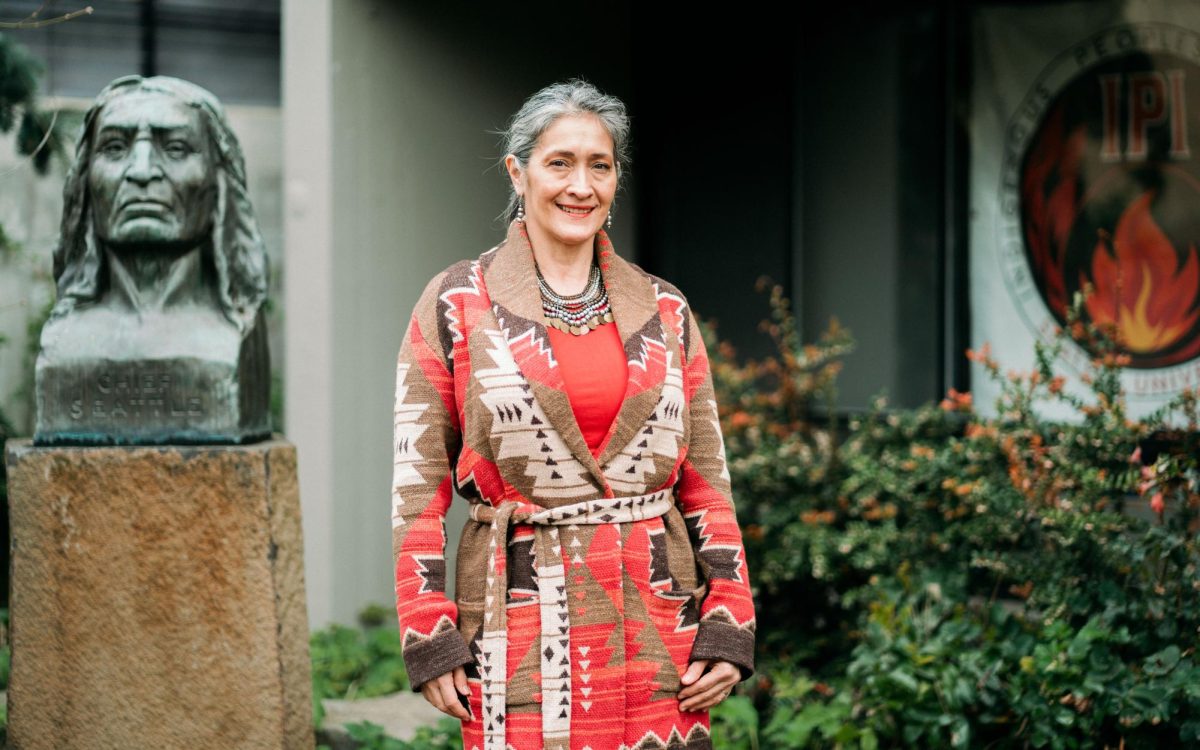“Dance is so important because we are the world through our bodies and through these bodies we dance,” said Miracle Orji, president of African Student Association and junior biochemistry and sociology double major. “It’s also a fun way of visualizing culture and connecting with ancestral spirits who danced before us.”
For many people of color, double consciousness is a lifelong struggle. The United States is blend of cultures, but it seems that everyone understands the universal language of dance.
On Feb. 15, the Office of Multicultural Affairs (OMA) and the International Student Center (ISC) collaborated on the latest monthly OMA Speaks event that talked about the conflict of identities people of color may experience.
During this month’s edition of OMA Speaks titled “Discovering Your Racial Identity in the U.S.,” three speakers who are all international students shared their experiences about when they came to Seattle U, how they’ve changed during their time here and how their relationships with their culture has also changed as a result.

SU students and faculty gathered for a dialogue about racial identity in the U.S with a focus on the perspective of international students.
Keziah Abigail, senior international business major and speaker at the event, explained how her identities evolved. “The meaning of my identities change. Here [at Seattle U] my friends westernize my identities,” Abigail said. “And I think that’s the problem. So, to make it easier on them, I’ll tell them, yes, I am a person of color.”
With so many cultural clubs and diversity on campus, there are solutions to this problem. For some, connecting to their culture on a daily basis has become second nature, explained Isheeta Tewari, senior cell and molecular biology major and copresident of the South Asian Student Association (SASA).
“I feel like everyone has their own way of connecting to their culture and everybody has a right to choose which one,” Tewari said. “I find it really nice to have Indian friends, I like going to India a lot, but I connect to my culture every day.
Tewari, along with SASA, created Dandiya night, an Indian dance that originated from the state of Gujarat, to display the collaboration between art and culture through dance.
“We started Dandiya night [because] despite none of us being Gujarati, we had grown up playing it,” Tewari said.
“It was a fun way to show our culture, and it’s not typical to advertise dancing to the outside community.”
There are clubs on campus that exclusively teach their respective cultural dances and perform at various events, such as the Japanese Hidaka Taiko club and the Marianas TaoTao club.
The Hidaka Taiko Club started a little over a year ago and focuses on sharing the art and culture of Taiko drumming to the Seattle U community and to greater Seattle. They do many different songs on the Taiko that tie back to specific festivals hosted in Japan.
“We do a dance in our performance for Harumatsuri, the spring festival hosted by JSA [Japanese Student Association],” said Serena Narisawa, a sociology sophomore at Seattle U and the secretary of Hidaka Taiko Club. “The dance is called Soran Bushi
(ソーラン節), and it’s a fisherman’s song and dance that’s well known by many Japanese people, and some Taiko groups as well.”
Marianas TaoTao Club is one of the oldest cultural clubs at Seattle U, established in 1993. Their biggest event every year is the Fiesta that focuses on culture dances and has skits. This year the 25th anniversary of the Fiesta will be held at Campion Ballroom on May 27.
Vice President of Marianas TaoTao club and Strategic Communications major Celine Dorion said that the club emphasizes cultural dancing as an important element of the event because it helps them share the story of their culture through song and performance.
“The songs we dance to feature local artists, and we believe that performance is the best way to invite our audience to experience our cultural practices and values,” Dorion said.
Before they were club leaders at Seattle U, many initially connected with their culture through its music, food, community and clothes. Some connected through the politics that were happening in their respective countries of origin. Many clubs have at least one event that does focus on the cultural dances, even if the members don’t know the dances themselves, or the club doesn’t focus exclusively on the dancing aspect of their culture.
The editor may be reached at
[email protected]











